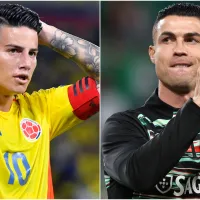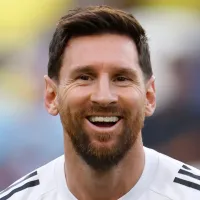Group B came to a dramatic end as England and the USA progressed to the Round of 16 after victories over Wales and Iran respectively. England now faces Senegal on Sunday, Dec. 4, at 2 p.m. ET on FS1.
England’s next opponents
The advantage of the knockout round is that England have three of their opponent’s games to review from the Group Stage of the tournament. Senegal lost to the Netherlands in their opener, but bounced back with wins against Qatar and Ecuador. Senegal showed grit in the final game against Ecuador. Ecuador only needed a draw, and Senegal were forced to take the lead twice.
England will take solace knowing that star forward Sadio Mane is not part of the squad. Mane was ruled out days before the tournament after picking up an injury in his last game for Bayern Munich before the World Cup break. The Senegal squad have shown the strength of the group, despite Mane’s absence. This is evidenced by all five of Senegal’s goals in this World Cup being scored by a different player.
A new challenge
England has never faced Senegal at the World Cup. To assess how best to deal with the current champions of the African Cup of Nations (AFCON), I analyzed their performances in the group stage.
Versus the Netherlands
Senegal were unfortunate to concede two against the Netherlands. Both teams were almost equally matched on possession, passing accuracy, and shots on target. The goals were conceded late in the game, which usually means a lapse in concentration or focus. England play a possession game and play the ball into the wide channels most often. The Netherlands did this more than any of its Group A opponents.
Versus Qatar
Unfortunately, the hosts were not able to muster any notable resistance to any of their opponents. However, Qatar’s lone goal at the tournament came against Senegal. Muntari’s header exposed a vulnerability in aerial battles. England has aerial prowess with Harry Kane, Harry Maguire and John Stones at the forefront.
Versus Ecuador
In the final group game against Ecuador, Senegal knew that nothing less than victory would allow them to advance. Ecuador dominated possession but were less effective at converting that possession into chances. Senegal were much more efficient when they had the ball.
The AFCON champions played ball after ball over the top. The forward line had the pace to make these long balls trouble the Ecuador backline. Senegal could look to do the same against England who will surely look to dominate possession. Senegal could target the weaknesses at the back that were evident with Iran’s first goal against England.
Potential England set up against Senegal
So far, Gareth Southgate has opted for two center-backs, Harry Maguire and John Stones, in all three of England’s group games. This frees up a player to pack the midfield.
The midfield trio of Jordan Henderson, Jude Bellingham, and Declan Rice were ruthlessly effective against Wales. Rice primarily played in the holding midfielder position, which allowed Bellingham and Henderson the freedom to play forward. However, at various stages of the game it was as if the three were rotating through the responsibility. This made it difficult for Wales to track the men in the midfield.
Southgate tends to get more cautious the further into a tournament England progresses. It is hard to imagine he will stick with a back two against Senegal. Especially when Senegal were so effective with the long balls. If Southgate keeps the back two, which I think he should, then a high line is a must to catch Senegal’s forwards in the offside trap. As long as Harry Maguire keeps up his form, this shouldn’t be an issue.
Competing priorities
Opting for three at the back would mean sacrificing the midfield rotating triangle that was so effective against Wales. This has a knock-on effect on the front three. Without enough bodies in the midfield the two forwards playing off Harry Kane will drop deeper. This will blunt the England attack, which scored nine goals in the group stage, a new best for an England team at the World Cup.
Assuming Southgate sticks with 4-3-3, the next question is which two forwards should play off Harry Kane? Phil Foden and Marcus Rashford got the start against Wales instead of Bukayo Saka and Raheem Sterling. In the first half against Wales, Rashford and Foden looked bright but not clinical. Rashford had the chance of the half and was only denied by Welsh goalkeeper Danny Ward. For the second half, the forwards switched sides and it made all the difference.
Tough choices
Saka scored two goals against Iran. Rashford now has three goals in the tournament, including a spectacular free kick against Wales. Even more impressive is that Rashford has three goals despite starting only one of the three games. The choice of who starts is a good dilemma to have. Based on the second half performance against Wales, Southgate should start Rashford and Foden against Senegal.
England needs to maximize the threat from the wide channels, like the Netherlands did. Also, England must increase the number of crosses coming into the box, like Qatar did. The best way for Southgate to achieve both objectives is to start Trent Alexander-Arnold. The Liverpool right back is a prolific crosser and knows how to hug the touchline.
Awaiting in the quarterfinals
If England succeed in the Round of 16, the potential opponents in the Quarter-finals could be France or Poland. The defending World Cup winners won group D, while Poland only just crept out of the group stage from Group C.
No doubt Southgate will revert to his cautious self if England make it that far. Senegal have plenty to say about that, and England better be prepared.
PHOTO: IMAGO / Moritz Müller















